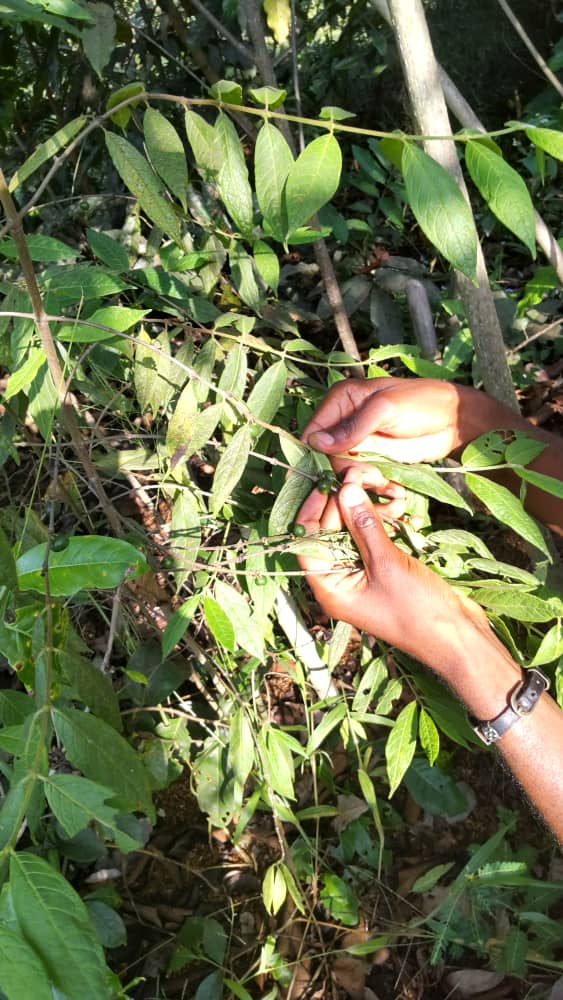First Records of reproductive maturity for two threatened Rytigynia species at LuTreeCo
-
Country
Uganda -
Region
Africa -
Type
News -
Source
BGCI Member
News published: 26 June 2025
At Lukango Tree Conservancy (LuTreeCo), a Ugandan conservation enterprise focused on threatened native trees and shrubs, we are using the Miyawaki method not only for ecosystem restoration but also as a research tool. Our central hypothesis is that tightly spaced, high-density native plantings originally developed to accelerate forest regeneration may also reduce the time it takes for some tree and shrub species to reach reproductive maturity. This has significant implications for seed banking, propagation strategies, and restoration planning for under-documented tropical species. In two separate Miyawaki plots at our Lake Victoria site, we have now documented what we believe to be the first recorded instances of reproductive maturity in two IUCN-listed Rubiaceae species: Rytigynia ruwenzoriensis and R. kigeziensis.
R. ruwenzoriensis seedlings, raised from seed in our nursery, were planted in November 2022 in a Miyawaki plot, as reported here previously. Fruiting was first observed 26 months after sowing. In a different Miyawaki plot established on 13 September 2023, we planted 302 seedlings representing 21 globally threatened native species, including R. kigeziensis, at four months of age. On 24 June 2025, fruit was observed on R. kigeziensis, confirming reproductive maturity just 25 months from seed. To our knowledge, these are the first documented reproductive timing data for either species.

In the absence of species-specific baselines, we compared our observations to related East African Rubiaceae. Many forest species including Psychotria mahonii, Vangueria apiculata, and Pavetta abyssinica typically take three to six years to reach maturity from seed under natural or lightly managed conditions. The timelines observed at LuTreeCo appear significantly shorter. While we are cautious not to overstate the role of the Miyawaki method in these results, the consistency of early fruiting across two independent plots suggests the method may influence reproductive timing. This may be due to the dense planting, resource competition, and full-sun exposure characteristic of Miyawaki design.
Seedlings have already been successfully propagated from the fruits of R. ruwenzoriensis, and we intend to do the same for R. kigeziensis in the coming months. Our goal is to raise the next generation of these species for future conservation planting, seed garden development, and long-term ex safeguarding.
We continue to monitor additional threatened taxa and invite collaboration with institutions interested in tropical plant phenology, propagation, and applied restoration ecology using structured native forest plots.
Find out more at: www.LuTreeCo.com.
Become a Member
Be part of the largest network of botanic gardens and plant conservation experts in the world by joining BGCI today!
Support BGCI
You can support our plant conservation efforts by sponsoring membership for small botanic gardens, contributing to the Global Botanic Garden Fund, and more!